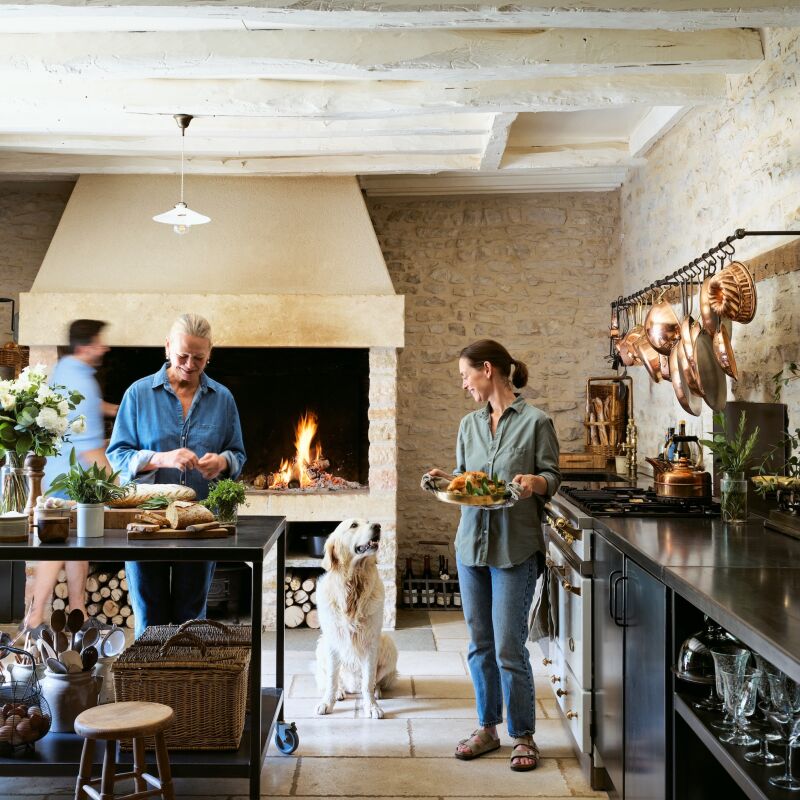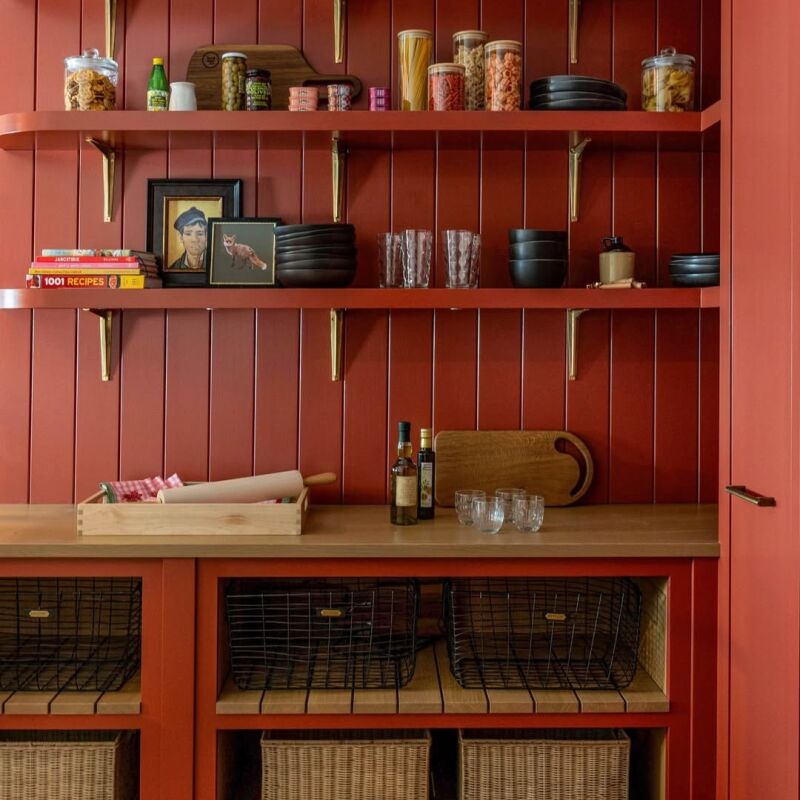What’s the most important storage system in your home? It’s not your clothes closet or your utility room or your linen cupboard. It’s your refrigerator. The most heavily used of all appliances, the fridge is also often the least organized. We understand the challenge—too many users and too many moving parts is a recipe for disarray, but the disorder is costing you. That’s why we teamed up with Bosch Home Appliances to create the ultimate organized refrigerator, with added eco-friendly tips.
Photography by Joyelle West; styling by Justine Hand and Kaylei McGaw.
The Benefits of an Organized Refrigerator

How often have you scrutinized the deep, dark recesses of your fridge in search of a long-lost jar of whatever? How much energy have you consumed as the door stands ajar? How much money have you lost on spoiled foods? The well-organized refrigerator is more than just a pretty picture; it helps save time, money, and the environment.
1. Don’t stuff your refrigerator.

A cluttered refrigerator is not only inefficient, it also affects the function of your fridge. A refrigerator works best—meaning it maintains the most consistent temperature—when air can circulate freely throughout. So don’t overload it.
2. Adjust your shelves.

Consider how you use your refrigerator. Most likely, you store a combination of tall, short, and medium-height items. Adjust your shelves accordingly to make maximum use of the vertical, as well as horizontal, space in your refrigerator.
3. Use glass containers for maximum visibility.

The benefits of glass containers are many. First, clear glass allows you to actually see what’s stored in a container. Second, glass seals more effectively than plastic, which not only keeps the food inside fresher, but also prevents it from picking up odors from other foods. Third, glass is safer and more sanitary. Many plastics contain harmful toxics which can leach into food, particularly if exposed to a microwave or when frozen. And even those plastics that are free of harmful chemicals can become scratched and can warp in the high heat of the dishwasher, meaning glass wins in the durability battle. Glass is also more versatile: It goes from fridge to freezer (more on this below) to microwave to table seamlessly. And finally, glass is better for Mother Nature. So though glass can cost more than plastic, its versatility and longevity make it a worthwhile investment.
4. Invest in reusable, eco-friendly wrapping.

Also worth the initial investment, reusable food wraps and covers are not only more attractive, but they’re better for the environment. Beeswax cloths such as Bee’s Wrap Sustainable Food Storage Wraps or Abeego Food Storage Flats are great for items that require a tight seal. For more permeable protection, Ambitalia’s Cloth Dish Covers (shown here in gray ticking stripe) are a Remodelista favorite.
5. Stack and layer: Maximize the height and depth of your fridge.

One of the common pitfalls of refrigerator (dis)organization is placing similarly sized items near each other, so the object in front obscures the one behind it.
For better viewing and to keep things within easy reach, try a more layered approach: Place low objects in front and tall items toward the back. Try long rectangular glass containers (similar in dimension to an egg carton) to utilize the depth of the refrigerator more effectively. Layer multiples of the same item, such as drinks, directly behind one another toward the back of the fridge. Also get creative with the vertical space in your refrigerator; stack glass storage containers and experiment with cake plates or small raised shelves for further flexibility.
6. Prolong the shelf life of your food by storing it in the right habitat.

We could write a whole feature piece on how best to store individual foods. Asparagus likes to stand vertically in about an inch of water. Hardy greens such as kale also like this treatment, while lettuce prefers the crisper. For carrots, trim the leaves as these can draw the moisture out of the root. Some foods, such as cut fruit, need to be stored in air-tight containers; while whole fruits and berries last longer when they can breathe. Fruits, which produce more ethylene gas that hastens ripening, should be stored separately from vegetables. Cucumbers don’t like the cold. Cheese appreciates the warmer areas of your fridge.
Long story short? Storing food in the correct location of your fridge and in the right container will prolong its shelf-life and save you money, so take the time to research those items you regularly have on hand. And choosing a refrigerator like Bosch helps keep different foods at the right temperature and humidity levels, prolonging the life of your foods.


7. Reserve the door for items with the longest shelf life.

8. Don’t Forget the Freezer.

If organization is important in your refrigerator, it’s perhaps doubly so in the freezer. To keep your freezer cold, you don’t want to spend time rummaging around; the goal is to get in and out as quickly as possible. Again, try glass containers so you can easily see the contents—just make sure any glass you use in the freezer is tempered to withstand extreme temperatures (most Mason jars are), and be sure to only fill liquids three-quarters full to allow for expansion.
To see the rest of this kitchen, visit A Young Couple’s Boston-Area Kitchen Overhaul with Bosch Appliances.
Finally, get more ideas on how to evaluate and choose your kitchen refrigerator in our Remodeling 101 Guide: Kitchen Refrigerators.





Have a Question or Comment About This Post?
Join the conversation (0)